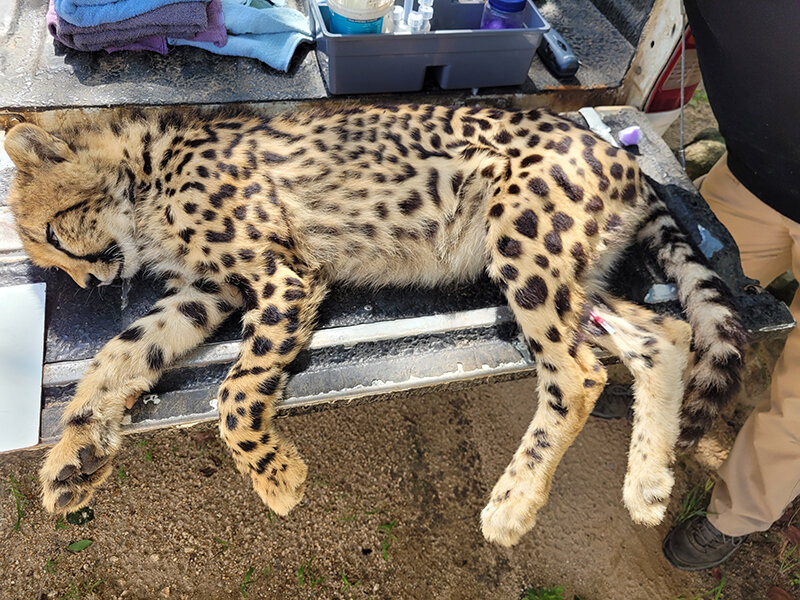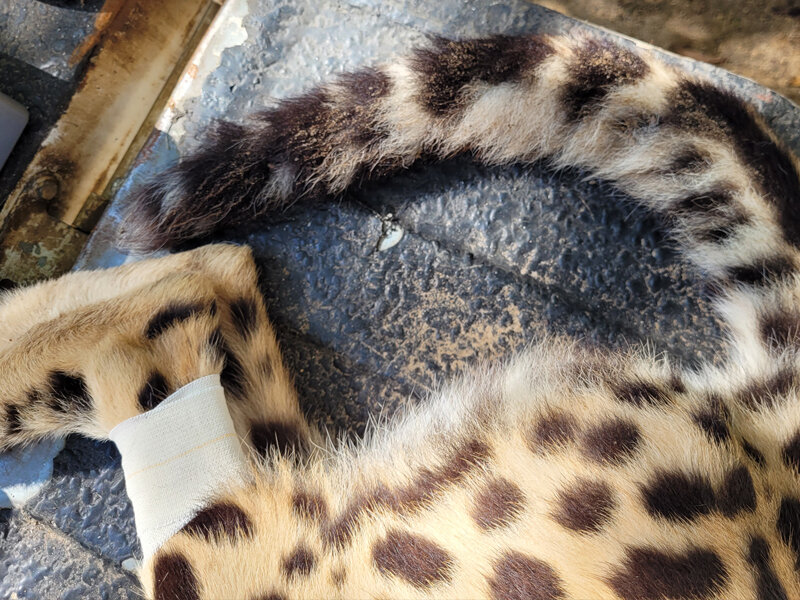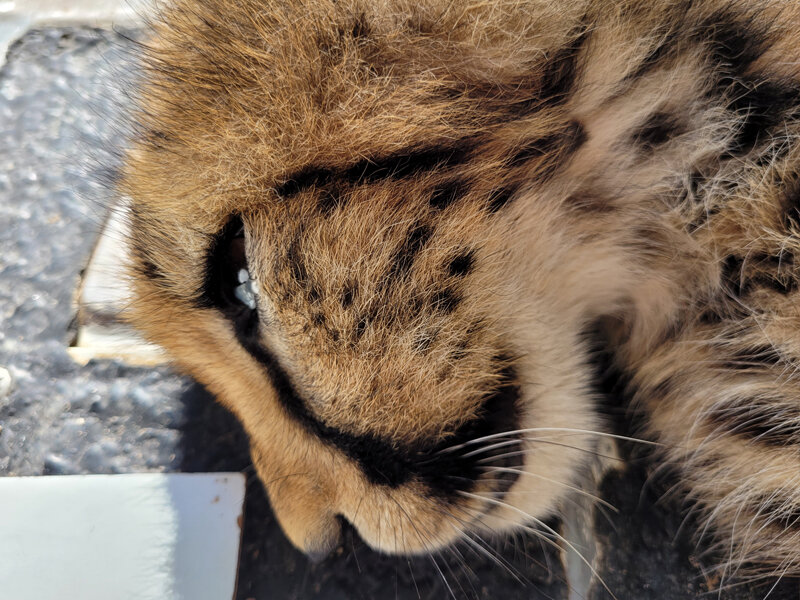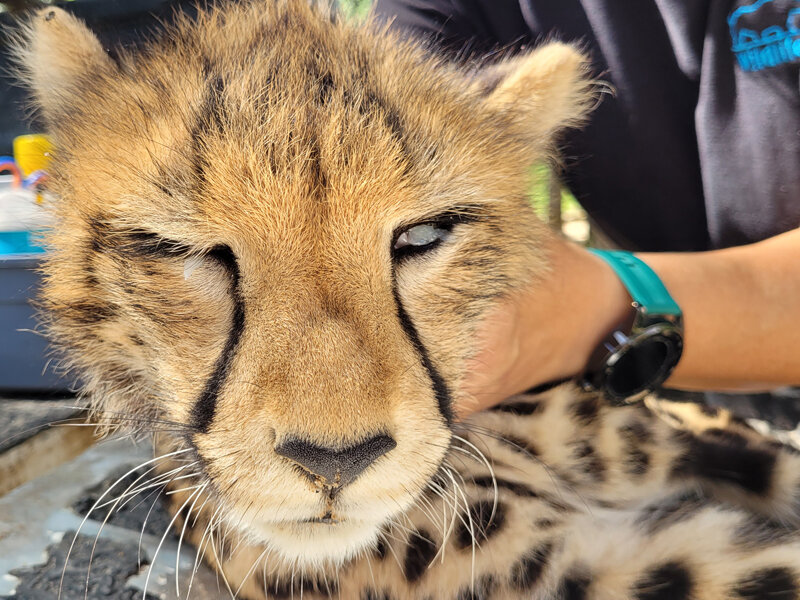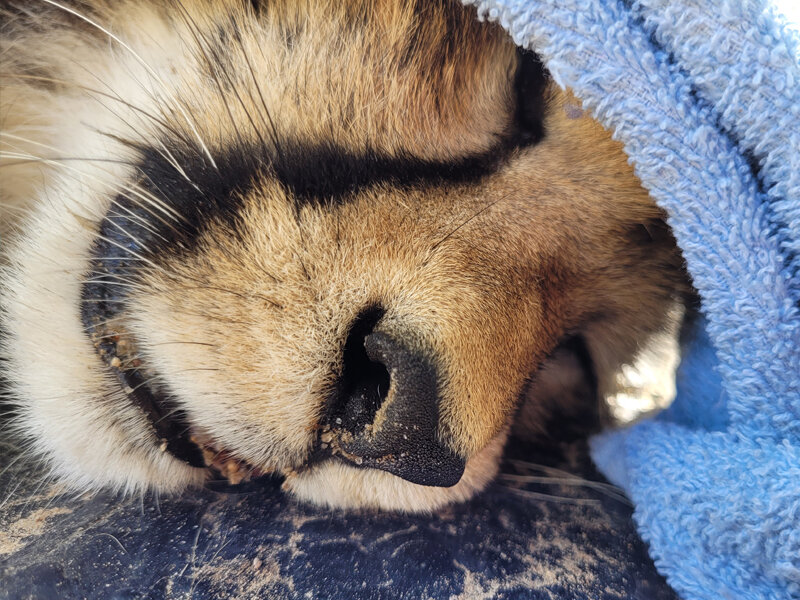By Lente Roode | Project Leader
A vital step in the life of each cheetah cub is to get their very own passport. To do this, their DNA needs to be tested, measurements recorded, and specific photos taken. This is common practise, as the passport information is crucial when it comes to their future release. Careful attention is given to which cheetah will be released into which reserve. This will ensure that no inbreeding will occur and that the metapopulation has a strong lineage, thereby assisting to protect the longevity of the species.
How the DNA testing is done
Blood and hair samples need to be taken from each cub and sent off for DNA testing. To do this, the cubs need to be sedated so that they are calm and can be worked on. Wildlife vet Dr Rogers darts each cub and after waiting a while until they are asleep, a Jelco is placed into one of their back legs so that a drip line for medication can be inserted if necessary. Ointment is placed into their eyes to prevent them from drying out, and blood is drawn from an artery. At least 4 ml is needed. Around 30 hairs are pulled from their tails (against the growth) and placed in a paper envelope.
Recording the cubs’ measurements
As part of the passport process, specific measurements need to be recorded for each cub. These are as follows:
Passport photos
As with the measurements, there are specific photos that need to be taken. Since the markings on every cheetah are different (like our human fingerprints), the cheetahs can be identified by their characteristic markings. The photos taken are as follows:
Once all the above has been done, the cubs are injected with antidote then placed back into their enclosure to wake up and get back to the day’s agenda, which involves playing and relaxing. The passport information can now be sent off for analysis and issue.
The photos shown here are of the female King cheetah cub, who has been named Olga, getting her DNA and photos done.
Project reports on GlobalGiving are posted directly to globalgiving.org by Project Leaders as they are completed, generally every 3-4 months. To protect the integrity of these documents, GlobalGiving does not alter them; therefore you may find some language or formatting issues.
If you donate to this project or have donated to this project, you can receive an email when this project posts a report. You can also subscribe for reports without donating.
